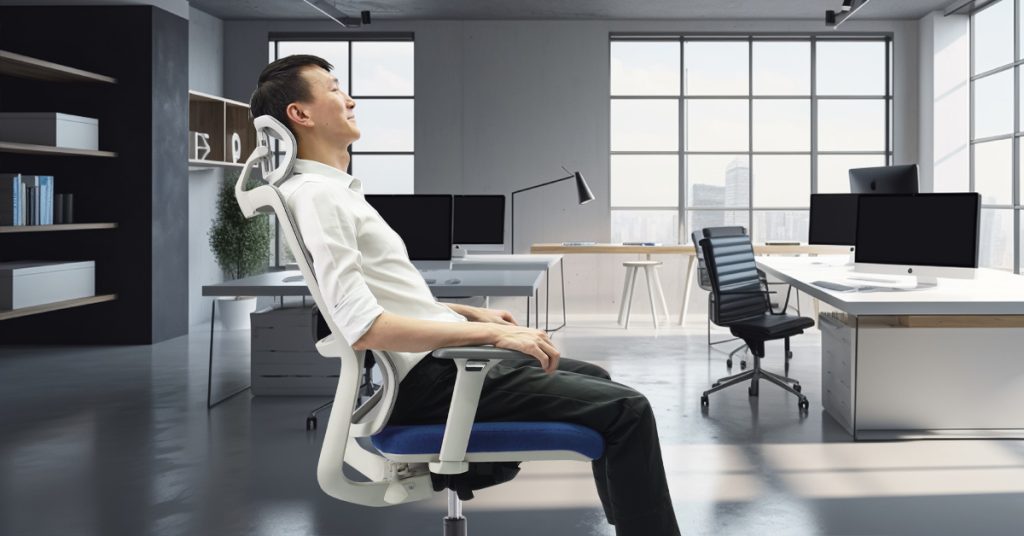
30 Apr Sciatica Solutions: Best Office Chairs Guide for Pain Relief and Comfort
Suffering from sciatica pain can significantly affect your daily life, especially if you spend long hours seated at work. However, choosing the right office chair can alleviate discomfort and provide much-needed relief.
In this guide, we will explore the impact of sciatica, how your office chair might contribute to it, what it is like to live with sciatica, and the essential criteria for selecting the best office chair for pain relief and comfort.
What is Sciatica?
Sciatica refers to pain that radiates along the path of the sciatic nerve, which branches from your lower back through your hips and buttocks and down each leg. It is usually caused by a herniated disk or bone spur on the spine compressing part of the nerve.
This compression leads to inflammation, pain, and sometimes numbness or tingling sensations in the affected leg. For those experiencing sciatica pain, finding relief is a must for everyday functionality.
Can Your Office Chair Cause You to Have Sciatica?
While your office chair may not directly cause sciatica, it can exacerbate existing symptoms or contribute to their development over time. Sitting for prolonged periods in an uncomfortable or poorly designed chair can increase pressure on the lower back and aggravate the sciatic nerve.
Factors such as lack of lumbar support, improper seat height, and inadequate cushioning can all play a role in worsening sciatica symptoms. Therefore, selecting an ergonomic and supportive office chair is essential for preventing or managing sciatica pain.
What Is It Like to Live with Sciatica?
Living with sciatica can be an experience marked by persistent discomfort and frustration. The pain, which often begins in the lower back and radiates down one or both legs, can vary from a dull ache to a sharp, shooting sensation. Simple daily activities that were once taken for granted, such as sitting, standing, or walking, suddenly become challenging endeavors.
Imagine trying to concentrate on your work tasks while feeling a constant throbbing in your lower back or experiencing shooting pains down your leg with every movement. The discomfort can be so intense that it becomes difficult to focus on anything else, affecting productivity and mental well-being. As the day wears on, fatigue sets in, compounding the physical discomfort and making it even harder to stay engaged and alert.
Beyond the physical pain, living with sciatica can take a toll on your emotional and psychological health. The constant battle with discomfort can lead to feelings of frustration, helplessness, and even depression. Simple pleasures like sitting down for a meal with family or enjoying a leisurely walk outdoors may no longer be enjoyable experiences but rather sources of anxiety and discomfort.
Sleep can also be elusive for those with sciatica. Finding a comfortable sleeping position that alleviates pressure on the affected nerve can be a nightly struggle. As a result, many individuals with sciatica experience disrupted sleep patterns, leading to fatigue and exacerbating the cycle of pain and discomfort.
The impact of sciatica extends beyond the individual experiencing the pain. Family members, friends, and coworkers may struggle to understand the extent of the discomfort and the limitations it imposes. Simple requests for assistance or accommodations may be met with skepticism or frustration, further adding to the sense of isolation and distress.
The Best Office Chair for Sciatica Pain
When selecting an office chair to alleviate sciatica pain, several criteria should be considered to ensure maximum comfort and support:

Ergonomic Design
Look for chairs specifically designed with ergonomic features such as adjustable lumbar support, seat height, and armrests. These features help maintain proper posture and reduce strain on the lower back, minimizing sciatica discomfort during long periods of sitting.
Lumbar Support
Proper lumbar support is important for relieving pressure on the lower back and promoting spine alignment. Choose a chair with adjustable lumbar support to customize the level of support based on your individual needs and preferences.
Seat Cushioning
Opt for a chair with ample seat cushioning to provide a comfortable and supportive surface for prolonged sitting. High-density foam or memory foam cushions can help distribute weight evenly and reduce pressure on the sciatic nerve, alleviating pain and discomfort.
Adjustability
A chair with multiple adjustable features allows you to customize the settings to fit your body shape and size. Look for chairs with adjustable seat height, tilt tension, and armrests to find the most comfortable and supportive position for your sciatica pain relief needs.
Material Quality
Consider the durability and breathability of the chair’s materials, especially if you’ll be using it for extended periods. Breathable mesh or fabric upholstery can help prevent overheating and discomfort, while sturdy construction ensures long-lasting support and stability.
Final Takeaways
Living with sciatica pain can be challenging, but selecting the right office chair can make a significant difference in your comfort and quality of life. In this regard, you can find the best office chair for sciatica pain relief by prioritizing ergonomic design, lumbar support, seat cushioning, adjustability, and material quality.
Investing in a comfortable office chair from a reliable office chair supplier is an investment in your health and well-being, allowing you to work with greater ease and productivity while managing sciatica symptoms effectively.

Sorry, the comment form is closed at this time.